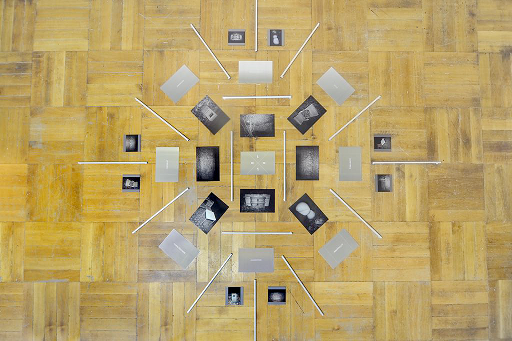Our aim is to invite JRC staff and visitors with or without any prior expert knowledge in the field to facilitate a discussion on the current state of AI and its future perspectives. We want to investigate what is currently possible with Artificial Intelligence in terms of “reviving” thinkers from the past, and provide the public with a playful insight and multi-sensory reflection on the implications, critical discourses, hopes and fears associated with the development of this technology. The aim of our approach is not purely technical but also a reflection on the possibilities of new AI-driven technologies to recreate and alter reality. We want to investigate how visualisations of utopian architectures have been a way to represent the “otherness” contained in discourses about technological development, specifically in AI or foreign alien technology.
JRC scientist Blagoj Delipetrev and Artist Paul Wiersbinski met in the framework of the “Resonances III” festival of the JRC SciArt program. Together, they developed the project A portrait of the AI as a young Cyber Oracle: a unique Artificial Intelligence algorithm that generated text and music, interpreted by an Opera Singer in a live performance at the Smart Grids Lab. On the 27th of October 2021, together with Blagoj, they introduced their work and ideas, unfolding at the nexus of art, science and technology, through a hybrid-style presentation to a live audience at the JRC and with a video live-stream for remote attendees. Their SciArt collaborations have thus far aimed to showcase new ways of viewing AI to the wider public, with an interdisciplinary and approachable attitude.
During the presentation, Paul illustrated the various AI-related projects he has been developing since the collaboration. He will elaborate on how a public art commission by the Federal German Government, a performance by the Federal German Theater Fund, and exhibitions with various sculptures, installations and video works, all show that scientific research can facilitate the production of new artworks. Blagoj explained how artworks can inspire science and how their collaboration can foster research, in the field of AI in particular. He focused on how the political dimension of regulating this technology within the EU has become an increasingly important issue in recent times.
The presentation concluded with an insight into the the development of their collaboration in 2021. They worked on a project proposal to advance and enhance their former project's GPT-2 generated text and music, using AI video impersonations to address current refacing technology, and digital immortality.

